Type of resources
Available actions
Topics
Keywords
Contact for the resource
Provided by
Years
Formats
Representation types
Update frequencies
status
Service types
Scale
-
Appendix 17.3. Phylogeographic and population genetics studies of selected Arctic species.
-
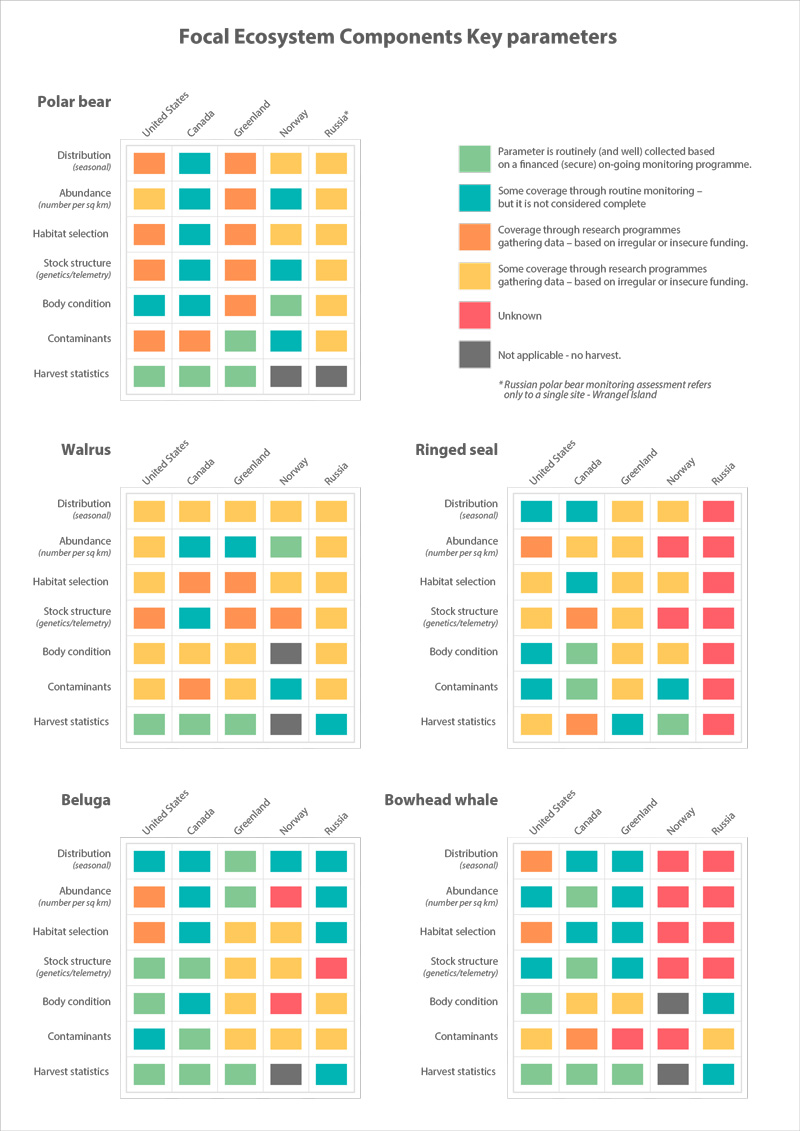
Assessment of monitoring implementation STATE OF THE ARCTIC MARINE BIODIVERSITY REPORT - <a href="https://arcticbiodiversity.is/findings/marine-mammals" target="_blank">Chapter 3</a> - Page 168 - Table 3.6.2
-
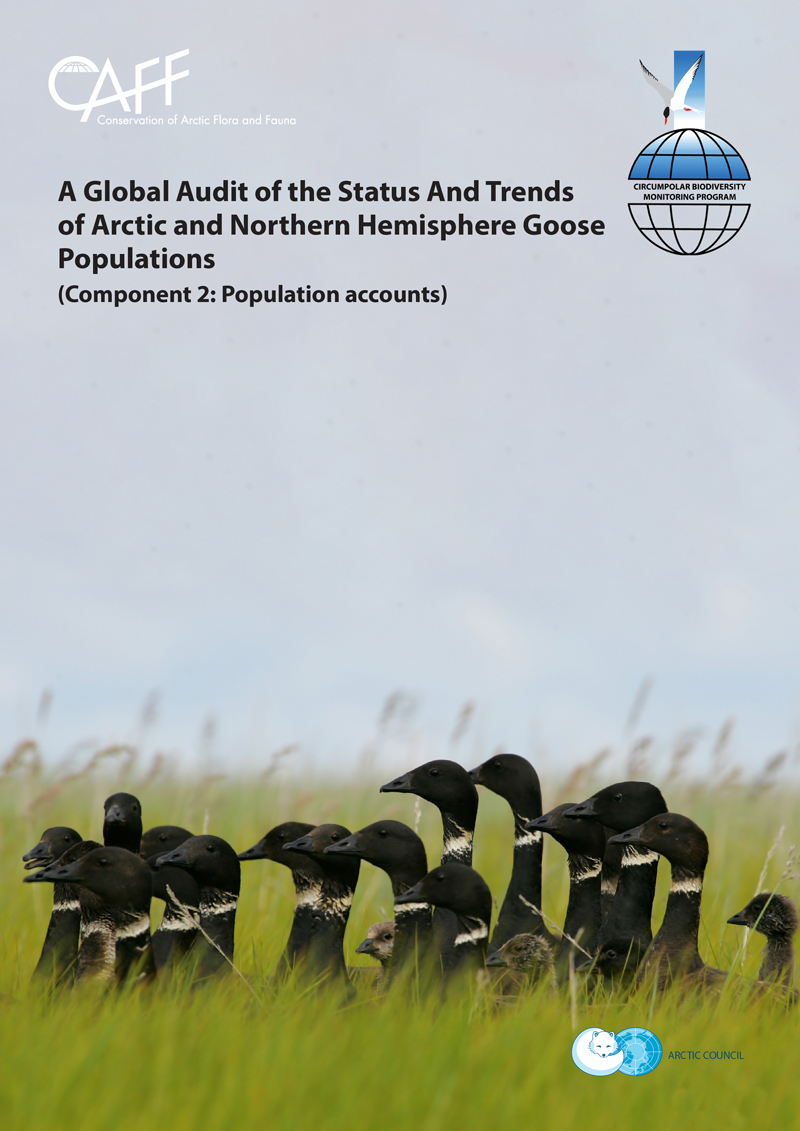
This report attempts to review the abundance, status and distribution of natural wild goose populations in the northern hemisphere. The report comprises three parts that 1) summarise key findings from the study and the methodology and analysis applied; 2) contain the individual accounts for each of the 68 populations included in this report; and 3) provide the datasets compiled for this study which will be made accessible on the Arctic Biodiversity Data Service.
-
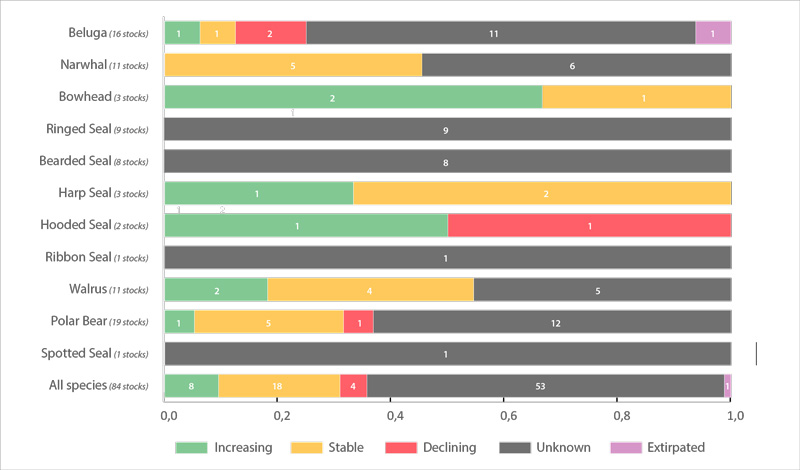
Trends in abundance of Arctic marine mammal Focal Ecosystem Components based on the most recent assessment for each recognized subpopulation of a species (red, declining trend; yellow, stable trend; green, increasing trend; grey, unknown trend). Number of subpopulations is given after species name. Each column is divided into equal segments, the sizes of which are not proportional to the size of the subpopulation. Ringed seal and bearded seal segments represent subspecies. Walrus segments represent subpopulations within subspecies. See Table 3.6.1 for details on abundance. STATE OF THE ARCTIC MARINE BIODIVERSITY REPORT - <a href="https://arcticbiodiversity.is/findings/marine-mammals" target="_blank">Chapter 3</a> - Page 156 - Figure 3.6.2
-

Human activity is expanding in the Arctic marine environment, in part due to warming ocean temperatures and the dramatic loss of summer sea ice. New and expanding human uses include fishing, shipping and offshore oil and gas development. All have the potential to place major additional stress on ocean ecosystems which are already undergoing profound change related to warming, sea ice loss, and alterations in ocean chemistry. Because activities conducted in one nation's waters can affect other parts of the region, effective management of some human uses in the Arctic marine environment will require international cooperation. The United Nations Convention on the Law of the Sea, in conjunction with other international agreements and national laws and regulations, provides a general legal foundation. However, new rules may be necessary to protect the Arctic marine environment. Examples of possible areas of international cooperation include: development of new standards for Arctic marine shipping, regulation of new or expanding Arctic fisheries, rules to protect the environment in the course of natural resource development, stricter regulation of Arctic tourism, mechanisms to assess and manage the cumulative impacts of multiple activities affecting the same ecosystems, and procedures for the establishment of representative networks of protected marine areas. Ecosystem-based management has the potential to provide an organizing framework for these new or enhanced management measures in the Arctic. Such an approach, as generally accepted at the international level, includes defining portions of ocean space for management purposes based on oceanographic and ecological criteria, and the development of management arrangements that address all human uses of that space in an integrated fashion. A central element of ecosystem-based management is the identification of ecologically significant or vulnerable areas that should be considered for protection due to their role in maintaining valued ecosystem functions and resilience. This data was created with the purpose to identify these areas within the Arctic marine environment.
-
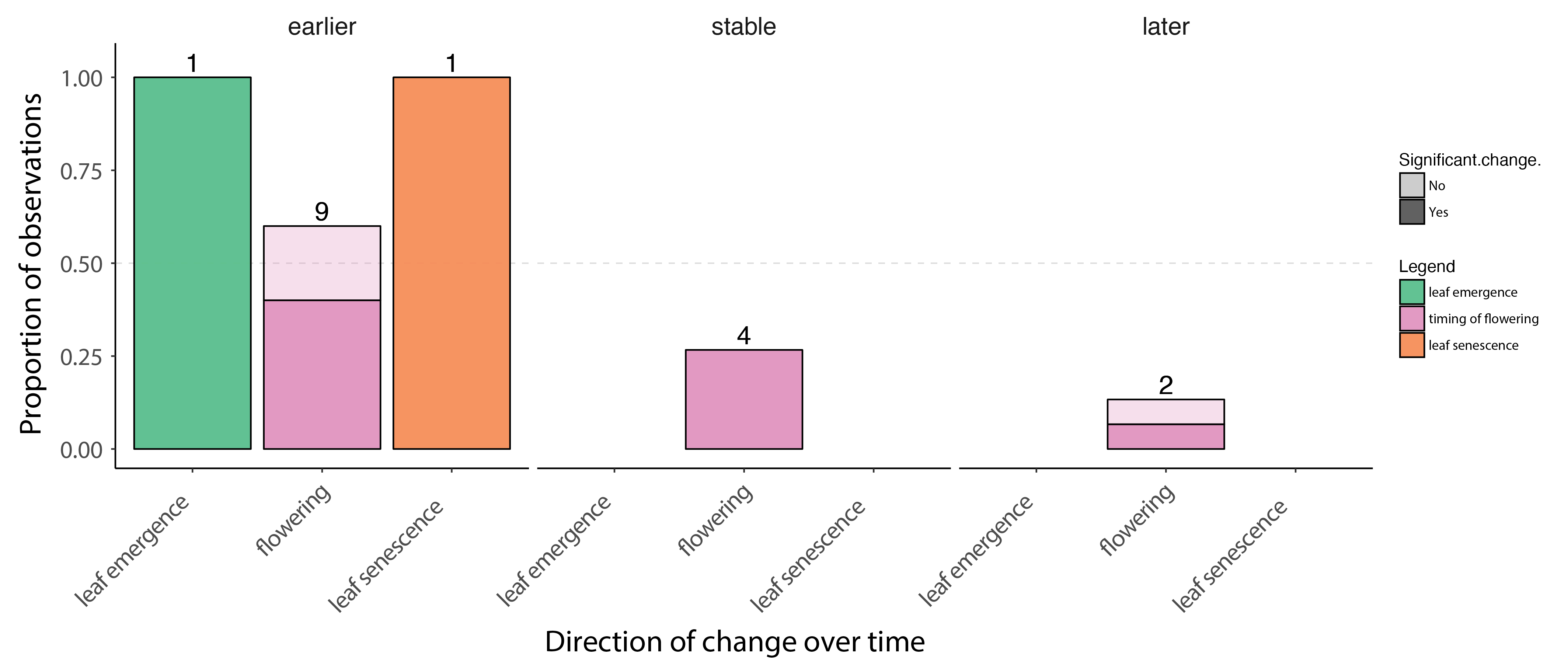
Change in plant phenology over time based on published studies, ranging from 9 to 21 years of duration. The bars show the proportion of observations where timing of phenological events advanced (earlier) was stable or were delayed (later) over time. The darker portions of each bar represent visible decrease, stable state, or increase results, and lighter portions represent marginally significant change. The numbers above each bar indicate the number of observations in that group. Figure from Bjorkman et al. 2020. STATE OF THE ARCTIC TERRESTRIAL BIODIVERSITY REPORT - Chapter 3 - Page 31- Figure 3.3
-
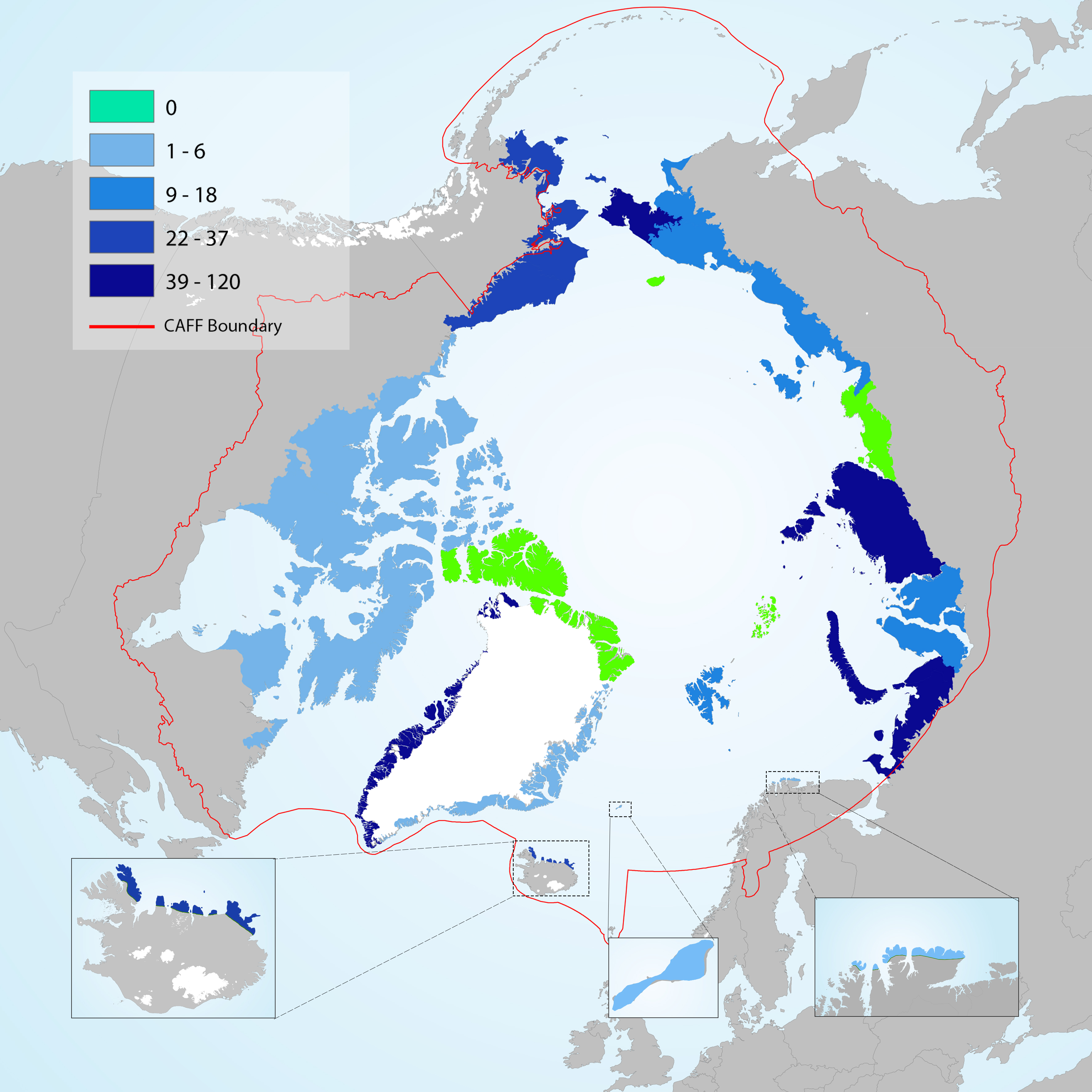
Number of non-native plant taxa that have become naturalised across the Arctic. No naturalised non-native taxa are recorded from Wrangel Island, Ellesmere Land – northern Greenland, Anabar-Olenyok and Frans Josef Land. Modified from Wasowicz et al. 2020 STATE OF THE ARCTIC TERRESTRIAL BIODIVERSITY REPORT - Chapter 3 - Page 32 - Figure 3.4
-

Arctic Marine Areas (AMAs) as defined in the CBMP Marine Plan. STATE OF THE ARCTIC MARINE BIODIVERSITY REPORT - <a href="https://arcticbiodiversity.is/marine" target="_blank">Chapter 1</a> - Page 15 - Figure 1.2
-
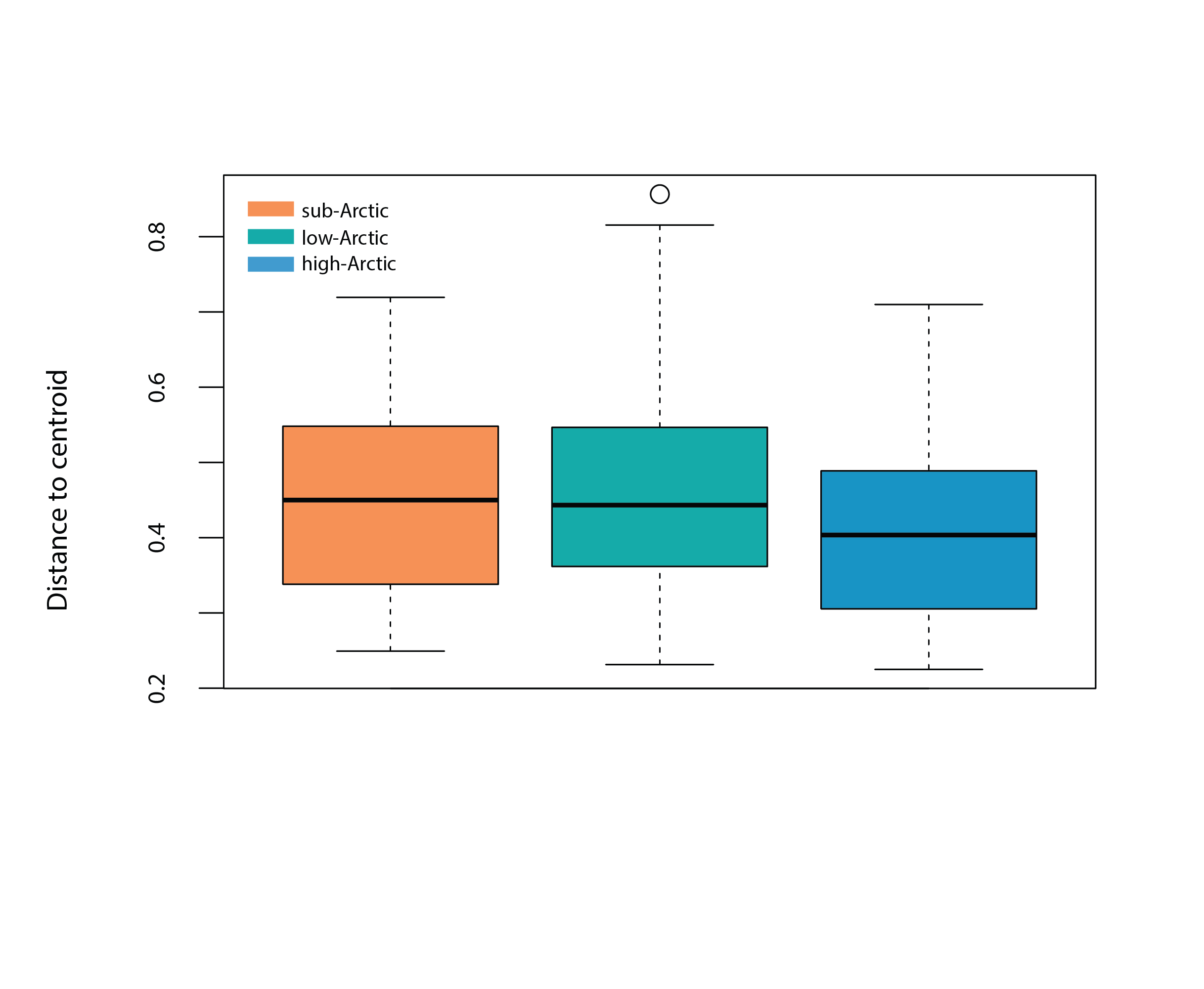
Box plot represents the homogeneity of assemblages in high Arctic (n=190), low Arctic (n=370) and sub-Arctic lakes (n=1151), i.e., the distance of individual lake phytoplankton assemblages to the group centroid in multivariate space. The mean distance to the centroid for each of the regions can be seen as an estimated of beta diversity, with increasing distance equating to greater differences among assemblages. State of the Arctic Freshwater Biodiversity Report - Chapter 4 - Page 48 - Figure 4-18
-
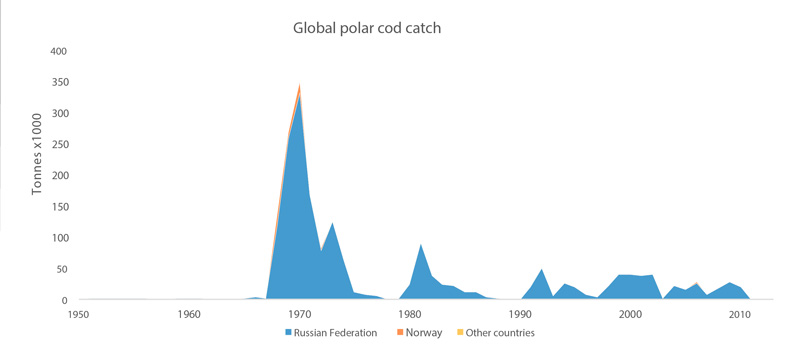
Global catches of polar cod from 1950 to 2011 (FAO 2015); 95% of the catches are from the Barents Sea. STATE OF THE ARCTIC MARINE BIODIVERSITY REPORT - <a href="https://arcticbiodiversity.is/findings/marine-fishes" target="_blank">Chapter 3</a> - Page 116 - Figure 3.4.4
 CAFF - Arctic Biodiversity Data Service (ABDS)
CAFF - Arctic Biodiversity Data Service (ABDS)